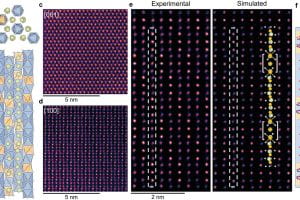Welcome to the Materials Modeling and Microscopy (M-cube) group.
Update (11/8/2024):
- All postdoctoral positions have been filled.
- We do not anticipate hiring new PhD students in Fall 2025.
Research in M-cube is focused on developing quantitative structure-property correlations in materials for energy applications. In order to do so, we use a synergistic combination of electronic structure calculations and aberration-corrected scanning transmission electron microscopy (STEM). We use the knowledge gained from this combination of theory and microscopy to design and optimize new materials with improved properties or even new functionalities. Some of the materials that we are currently interested in are complex oxides, compound semiconductors, 2D materials, and high entropy alloys for applications such as in electrocatalysis, solar cells, high-power electronics, and high-strength materials.
We use some of the fastest supercomputers, such as Stampede 2 at the Texas Advanced Computing Center, to perform the electronic structure calculations. For the atomic-resolution STEM imaging and spectroscopy, we use some of the most powerful electron microscopes, such as the Nion UltraSTEMs, at Oak Ridge National Laboratory. We collaborate extensively with materials chemists and electrochemists for synthesis and validation of the materials that we predict using theory and computation, and for subsequent atomic-structure characterization.











